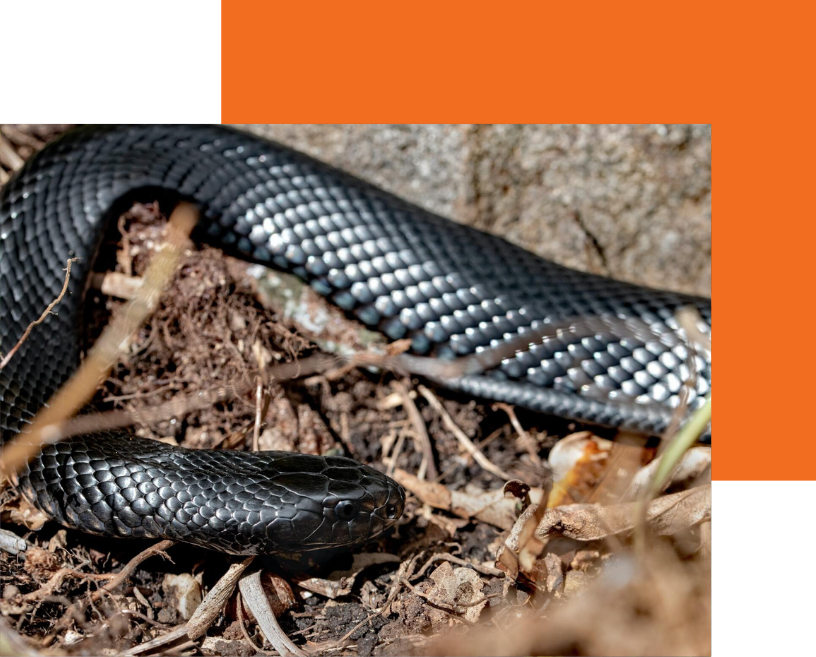Snakes
Recently, scientists have learned humans do not necessarily have an innate fear of snakes. Rather, we are born with a heightened interest in the creatures and an instinct to rapidly respond to them. That reaction shifts to fear as we grow older and learn what the reptiles are capable of. The change happens young because humans have also developed to acquire fear of danger quickly. Most can be dangerous in some capacity, though all are not deadly. Their bites are responsible for killing more people annually than any other venomous creature. Four poisonous species roam Illinois: the Copperhead, Cottonmouth, Eastern Massasauga Rattlesnake, and the Timber Rattlesnake. The Missouri list is similar but also includes Western Pygmy Rattlesnakes, one of the smallest but most vicious in North America.
The list of non-poisonous breeds across the two states is much longer. This area is home to various garter, green, water, rat, king snakes, and more. They possess a nasty bite and the ability to sneak up on you and lash out quickly. They often have colors and patterns meant to mimic their more dangerous counterparts. If you do see one around your property, it’s important to call an expert, rather than trying to identify it yourself. You’re most likely to see them in the summer when they are more mobile, and the spring, which is their mating season. They typically hibernate through the winter.
One of the more terrifying situations is the notion of going to your bathroom and seeing a one slithering out through your toilet. The scenario is more common than you might think. These creatures often hang out in trees, and from there, they can easily extend onto your roof. Then they go to your ventilation pipes, which are connected to your bathroom plumbing.
They are cold-blooded, in the literal sense. They control their body temperature by basking outside in a sunny spot to warm up and then seek shade to cool down. If you see one out on your pool deck or resting in your back yard, it may have gotten there while searching for some rays. Of course, they could also be looking for something to eat. The carnivores are known for eating rodents, but they’ll also eat birds, frogs, other snakes, and small pets. They often have poor eyesight, and though they have what appear to be nostrils, they don’t use them to smell. Instead, those nostrils are used to breathe, and the creature’s forked tongue extends out to the air to work its sense of smell. They are also very in-tune to vibrations and use those to determine what’s approaching them.
At Cardinal Insect & Pest Solutions, we get things done the right way with an Integrated Pest Management approach. No two plans are the same. We come up with a plan based on the specific pests we’re dealing with. How far they’ve gotten into developing their hold over your property, the environment they’re in, and the layout of your home or business is taken into consideration. That pest solution will likely have several different techniques worked into it. Once we’ve decided on a strategy, we’ll walk you through the details and make sure you’re involved in the process so that you’re confident you’re getting the best possible service.


